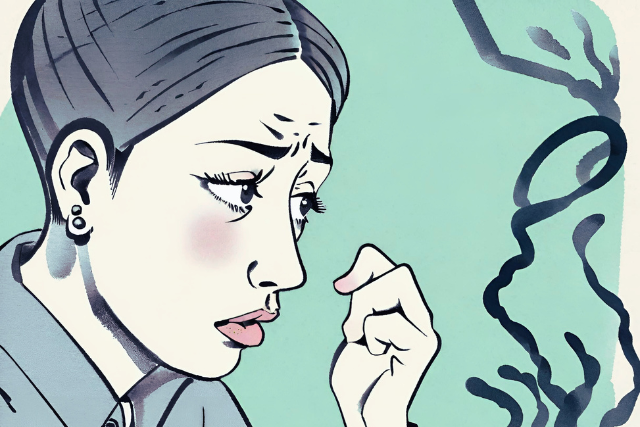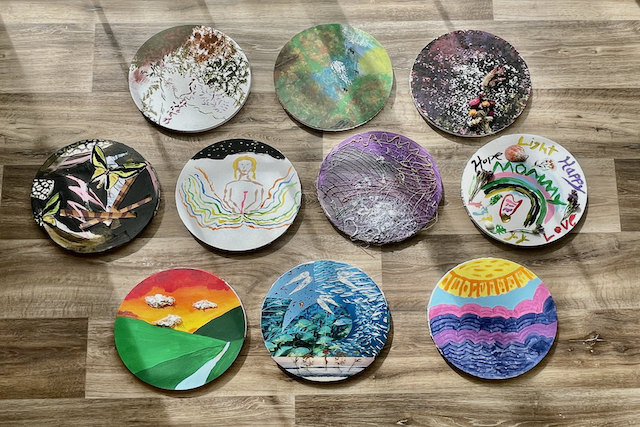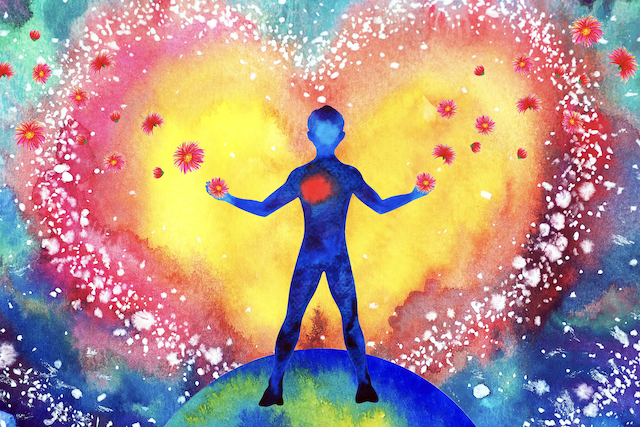
“Never fear shadows. They simply mean there’s a light shining somewhere nearby.” ~Ruth E. Renkel
Before I started healing my anxiety, I thought there was something seriously wrong with me. Every panic attack, every morning filled with dread, every social event that I would mentally prepare myself for made me feel like I had some inner deficiency that no one else had.
I used to work as a cashier at a grocery store and would avoid hanging out with people twenty-four hours before my shift. Yep. That means if I worked on Saturday morning, I wouldn’t hang out with anyone from Friday afternoon to the evening.
Why? Because I had to “prepare” myself for my entry-level position at the grocery store. I had to “make sure I felt okay,” as if the whole world was watching to see if I didn’t smile for an hour.
I was extremely critical of myself and felt that if I wasn’t drenched in positivity, I was useless to the world. And that if I wasn’t exuding confidence every moment of my life, people would think I wasn’t good enough.
When I started on my journey to healing my anxiety, I uncovered a few life events that had had a major effect on my inner world. One of them occurred during a dance competition that I was a part of at a young age. I was maybe ten years old when I was a part of a Bhangra group, which is a style of folk dance that originated in Punjab, India.
Bhangra is a highly energized style of dance, and when you watch a performance, you’ll see that the dancers are smiling really wide and having the time of their lives. This is an important part of the performance, as you’re meant to bring this high energy to the stage so that the audience has a good time.
At one of my dance competitions, my group had just finished performing, and the judges were ready to say their piece. All of the judges had great things to say, except for one that decided to point out a flaw in my personal part of the performance. He said, “Everyone did such an amazing job and were smiling so big and having fun, but you” (points to me, younger Raman) “didn’t seem to be smiling so wide. Why was that?”
As a ten-year-old, my heart dropped as every eyeball in that auditorium looked straight at me. I can’t quite remember what I responded with, but if I’m being honest, I don’t think I said much. I tried to keep it “chill.” I’m pretty sure I just shrugged and said, “I don’t know” while my soul exited my body out of embarrassment, and then eventually walked off the stage with my dance group.
We were young, and we were just having fun with this dance competition. We weren’t trying to win a national championship, and we weren’t even trying that hard to impress the judges. Even though we did end up winning a prize, the critique from that one judge ended up dampening my spirits.
Being singled out from the rest of the group really had an impact on me. Though our mind doesn’t understand why we might experience certain anxieties and fears as we get older, the child that experienced that pain still lives within us.
And the judge from a dance competition becomes an inner judge that critiques us before a work shift as a cashier. “Smile bigger!!!” he says.
It’s both the small moments and big moments of pain that stick around with us. And as much as our adult mind can dismiss the experience by thinking, “Oh, it was just one thing someone said, that’s not a big deal,” to that little kid, it is. It’s a really big deal!
And that leads me to the first myth we have about anxiety: that there’s something wrong with us.
If you have experienced any form of anxiety, there’s nothing wrong with you. Actually, your internal system is working exactly as it was designed! To avoid a possible future “threat” (in this case, the embarrassment from the judge in my story), we create an inner judge to “fix” what was wrong (in this case, not smiling big enough at the dance performance), which will hopefully avoid having someone critique us from the outside (at work).
It’s a weird way that our inner world works, but it’s doing its job. Because the truth is, yes, if you spend twenty-four hours before a work shift to mentally prepare yourself for smiling big at work, then you’ll most likely smile big at work and no one will critique you for being a downer.
Now, when it starts to get really difficult is when you stop having the energy to perform for the world. It becomes extra challenging when your inner critic makes you feel like you’re not enough. It’s usually around this time that people start looking for some help, because even though their inner world is doing its job, it becomes exhausting to keep up with it.
Which leads me to the second myth around having anxiety: that if you have anxiety, you’ll have it forever.
A lot of people believe that if someone gives you a label, that label has to last forever. Not me, though. For example, when my doctor told me I had moderate generalized anxiety disorder, I decided that it wasn’t going to be like that for the rest of my life and that I would do what I needed to do to heal the anxiety.
Anxiety isn’t something you need to “cope” with. I recently suggested a tool to a client, a young woman, and she said, “Oh, yay another coping mechanism!” As excited as she was to try something new, I had to be authentic and let her know that her anxiety wasn’t something she merely had to cope with; it was something that could be transformed.
The first step to transforming your anxiety is getting aware of what your dominant thoughts are. Oftentimes, it’s the hypercritical thoughts that are causing the anxiety. When we can become aware of these thoughts, we can then ask where they originated from.
Just like how I have an origin story for my anxiety, you do too! Oftentimes, there’s more than one origin story—a culmination of origin stories—but it helps to start with one.
The more open you are to healing through your story, and the more willing you are to transform, the more you’ll shift. Your anxiety doesn’t have to be in the driver’s seat of your life forever. It’s even allowed to be a passenger.
And that leads us to the third and final myth around anxiety: that to heal, you must be completely anxiety-free and completely at peace at all times.
The truth is, in my six years of healing, anxiety has popped its head up from time to time. The first time I offered workshops, I was a nervous wreck for weeks.
I’ll still feel anxious if I’m trying something new, but the way I respond is different.
When we start to heal, it creates a strength within us that allows us to show up differently in our life. Even though I felt really nervous to put myself out there in my career, I had the inner strength to go for it! That’s because anxiety was no longer steering the vehicle of my life.
It became a welcome passenger.
The truth is, if anxiety comes from that inner kid and her experiences, then I don’t want to kick her out of the car. That little girl deserves a safe space in my life.
When anxiety pops her head up, I say hello. I journal from her voice, I talk to her, and I let her know it’s going to be okay.
I remind her that I’m the opposite of that judge from that day, and that I will be the one to uplift and empower her. That she is welcome on my journey to show up whenever she wants to. And that I’d love to have her join me for the ride.
I’m here to show her all of the magic that’s inside of her. And I’m here to remind her of her gifts and talents—the ones that no one can take away from her. She is a welcome passenger, and I will be driving the car to our greatest good.
My experience with anxiety and the healing that came along with it has taught me to be kinder to myself, to see the human behind their mask, and to be a walking example of inner peace.
Perhaps the more difficult moments of our life are also the ones that shape us into more of who we’re meant to become.
*Image generated by AI
![]()
About Raman Hari
Raman Hari works as an intuitive coach, which is a modality of life coaching that focuses on the interconnection between the mind, body, and spirit. She has reached over 1 million people through her inspiring social media content, and has been coaching clients through workshops and 1:1 sessions centered around healing anxiety and stress, creating a baseline of inner peace, and living a purpose-driven life. You can check out Raman’s Ultimate Guide to Shift Anxiety and Stress here.
Get in the conversation! Click here to leave a comment on the site.
from Tiny Buddha https://ift.tt/WSbOlVK







